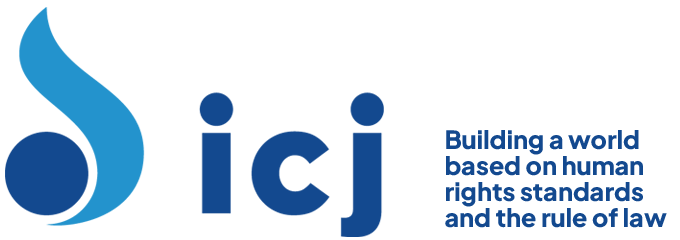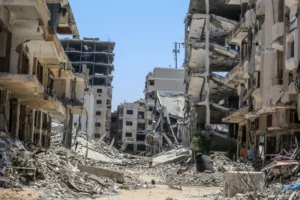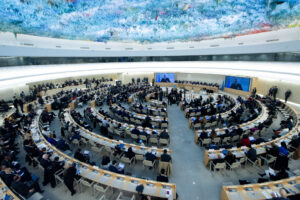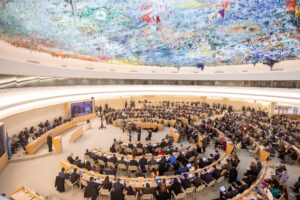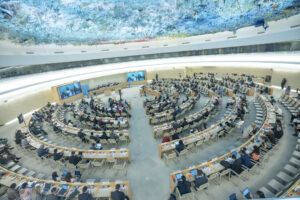II. Preventing violence committed in the name of religion
A. A complex phenomenon
11. Furthermore, homophobic and transphobic violence against lesbian, gay, bisexual and transgender (LGBT) persons may also be perpetrated in the name of religion. Those perceived as LGBT may be targets of organized abuse, including by religious extremists.{{5}} Violence against LGBT persons includes brutal gang rapes, so-called “curative” rapes and family violence owing to their sexual orientation and gender identity.{{6}} There is a strong connection between discrimination in law and practice, and incitement to violence in the name of religion and violence itself. Violence against women and against LGBT persons is often justified and given legitimacy by discriminatory laws based on religious laws or supported by religious authorities, such as laws criminalizing adultery, homosexuality or cross-dressing. The Human Rights Committee has noted with concern hate speech and manifestations of intolerance and prejudice by religious leaders against individuals on the basis of their sexual orientation, in a broader context of acts of violence, including killings of LGBT persons.{{7}} There have also been reports of direct violence exercised by religious authorities against LGBT persons, although many of them are religiously interested in practising.
C. Root causes, factors and political circumstances
3. Policies of exclusion
34. Policies of exclusion are often manifested in hostile public statements made by populist politicians, usually in conjunction with incitement to religious hatred in the media. Sometimes, even very small minorities are demonized as allegedly posing a dangerous threat to the long-term survival of the nation, or they are accused of being involved in clandestine conspiracies. The Special Rapporteur has often noted a pronounced gender dimension in hate speech, for example, the stoked fear of far-reaching demographic changes allegedly in a strategic attempt of minorities to get the upper hand in the long run, and as a result of a hyperbolic sexual drive ascribed to members of religious minorities, who thereby are depicted as “primitive”. LGBT people have also been falsely portrayed in religious discourse as “threatening” the survival of a nation or being part of a “conspiracy” to control population growth.
E. Obligations and responsibilities under international law
1. Overarching obligations of the State
(a) Obligations to respect
42. For the context of the present discussion, the obligations to respect chiefly require that the State abandon all sorts of — formal or informal — policies of exclusion by which persons belonging to certain groups suffer discrimination.{{9}} This has manifold consequences. In particular, Government representatives must clearly refrain from any statements that may be perceived as condoning or even encouraging acts of violence that target religious dissenters, religious minorities or other groups of people. Legislation that renders the existence of certain religious communities as such “illegal” in the country or prevents them from developing a sustainable infrastructure is incompatible with the universal right to freedom of religion or belief and should be revoked. Such legislation furthermore fuels resentments and may encourage acts of intimidation, including by law enforcement agencies. Moreover, the State should repeal anti-blasphemy laws, anti-conversion laws and criminal laws that discriminate against certain people according to their religious affiliations or beliefs or criminalize their “dissident” practices. Apart from further increasing the vulnerability of marginalized groups or individuals, these laws may give a pretext to vigilante groups and other perpetrators of hatred for intimidating people and committing acts of violence. Textbooks used for school education should not contain stereotypes and prejudices that may stoke hostile sentiments against the followers of certain religions or beliefs and groups that suffer systematic discrimination, including women and LGBT persons.
F. Roles of other stakeholders
2. Interreligious initiatives
67. For interreligious communication to be productive, partners should meet on an equal footing and there should always be room for a meaningful exchange beyond mere ritualistic encounters. A broad representation, including gender balance and participation of different generations, can ensure that larger populations can take active ownership of such initiatives, thus enhancing their sustainability. There is much space for improvements in this regard, since women, including feminist theologians, are typically very underrepresented in interreligious dialogue initiatives. Their voices are sadly absent in many projects. The roles of women human rights defenders should also be promoted as they can contribute to a less patriarchal interpretation of religions that disproportionately affect the rights of women, girls and LGBT persons.
Link to full text of the report: Report-SRReligion-2014-eng
[[5]]5. See A/HRC/19/41, para. 21.[[5]]
[[6]]6. See A/HRC/14/22/Add.2, paras. 38 and 89.[[6]]
[[7]]7. See CCPR/C/RUS/CO/6, para. 27.[[7]]
[[9]]9. See Human Rights Committee general comment no. 22, CCPR/C/21/Rev.1/Add.4, paras. 9 and 10.[[9]]
